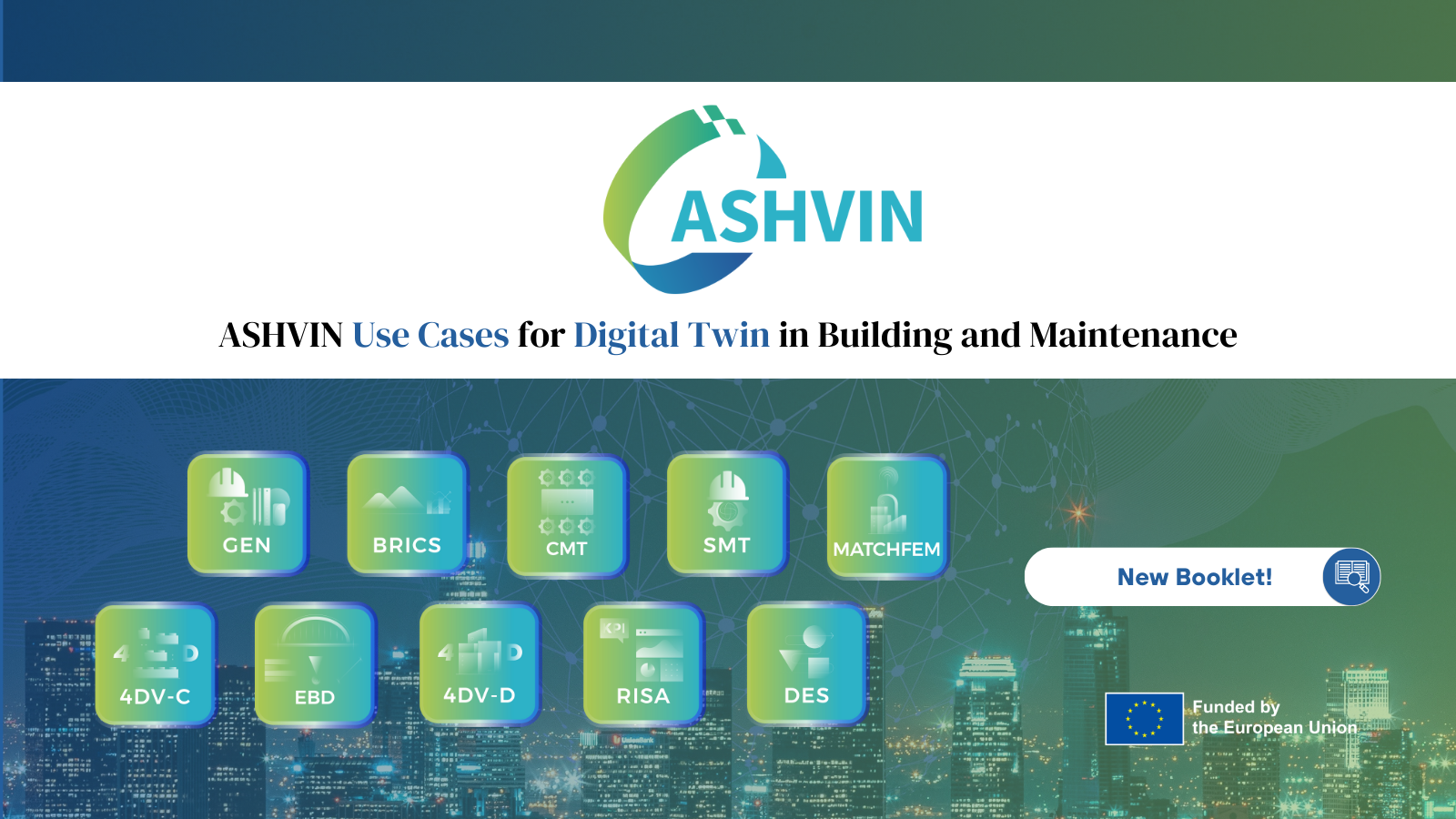Meeting with our Groundbreaking Researchers
In today’s world, data is a powerful asset that can drive innovation, efficiency, and success across various domains when properly collected, analysed and utilised. In the ASHVIN world, sensor data, data fusion and machine learning enhance the capabilities of digital twins in the construction industry by providing real-time insights, predictive analytics, and tools for efficient and informed decision-making across various aspects of a construction project. An engaged partner is leading this task, developing the necessary algorithms to collect, process, and fuse information from multiple sources and services, such as The Centre for Research & Technology, Hellas (CERTH). At the forefront of this work are the contributions of statistician and Postdoc Researcher Athina Tsanousa.
We are pleased to present to you this #7 interview from our series of discussions with the new generation of researchers that participate in the ASHVIN project as a part of their MCs, PhD or Postdoc studies. They will share their research approach in ASHVIN, and plans to continue exploiting this work beyond the project.
Today, we invite Athina to take the stage and tell us more about her research work. Since the beginning of the project, she has brought all her previous experience in working with the analysis and fusion of multimodal sensor data. For three years, she has integrated different environmental data sources, allowing for the fusion of, for example, weather and traffic data. This task includes automated decision-level fusion capability for classification and identification.
We invite you to watch Athina’s’ video presentation to gain a comprehensive understanding. This is the seventh episode of our #ResearchStories series, and it sets the stage for further discussions.
Hello Athina, we are happy to hear more about your work.
Hello, I am looking forward to sharing my research work.
Could you describe the scope of your research, and how it is related to Digital Building Twins?
Well, my research focuses on applying and developing fusion methods for combining information extracted from multiple and heterogeneous sources.
A data fusion tool can provide the results of its analysis to the DT, we can say it is a background tool.
Which aspects of ASHVIN are relevant to your Post doc research ?
The aspects related to data analysis and multimodal fusion, especially from multiple sensors, as in the PUCs of FASADA and NCC, where environmental sensors were installed in buildings to collect relevant information.
We applied fusion methods to extract information about occupancy from these sensors.
Which challenges have you faced while doing your research?
One big challenge in pilot use cases is always the collection of an adequate amount of data and also the correct labelling.
ASHVIN is ending in March 2024, what will you take with you from the project for the next steps of your research and professional development ?
I have to say that I expanded my knowledge in sensor data fusion applications from the construction domain, collaborated with very interesting people, I’ve learned about environmental sensing, tracking machines during construction and water level sensors.
Thanks for sharing your work with us!
💡 Did you know that behind the scenes in the ASHVIN project, there are over 30 university students, from different degrees, contributing to the project’s research related to the technical development of the digital twin system and to its demonstration in real-life sites. Our academic partners ; Technical University of Berlin (TUB), Erasmus University of Rotterdam (EUR) and Polytechnic University of Catalonia (UPC) oversee their involvement in this project.





